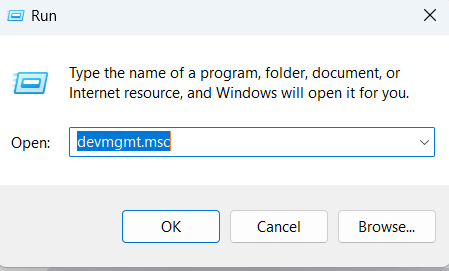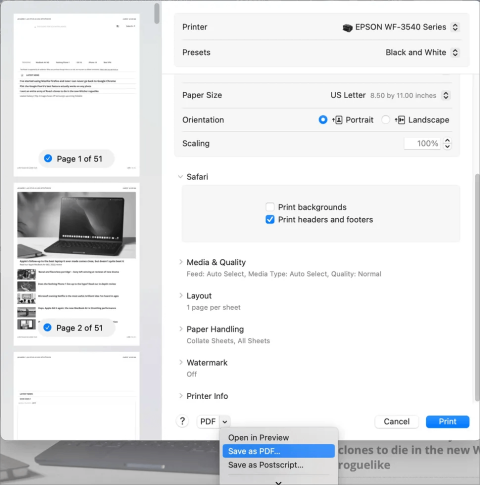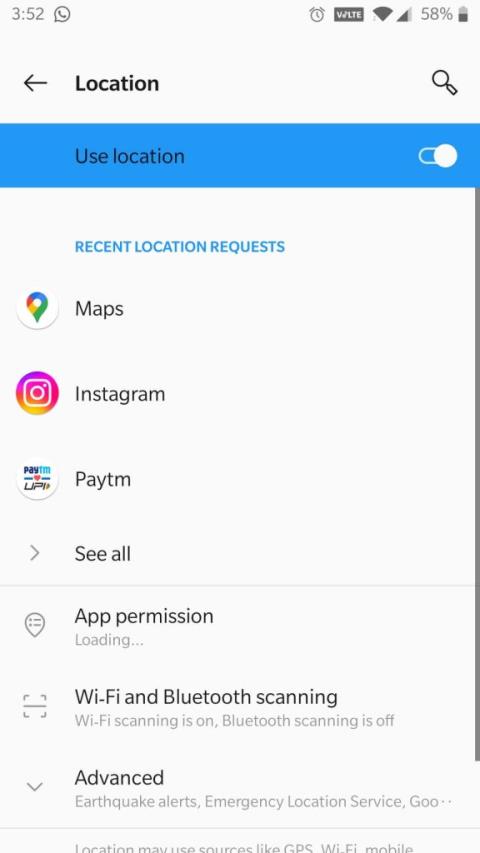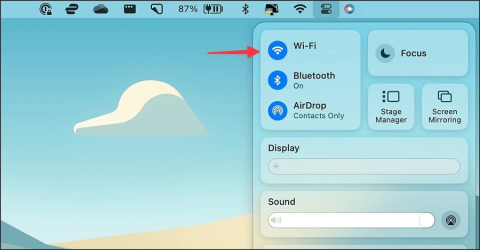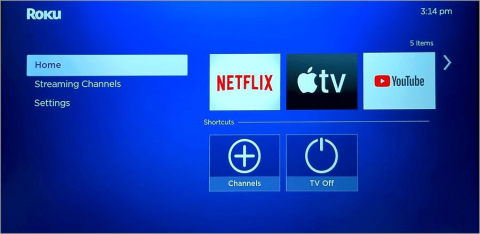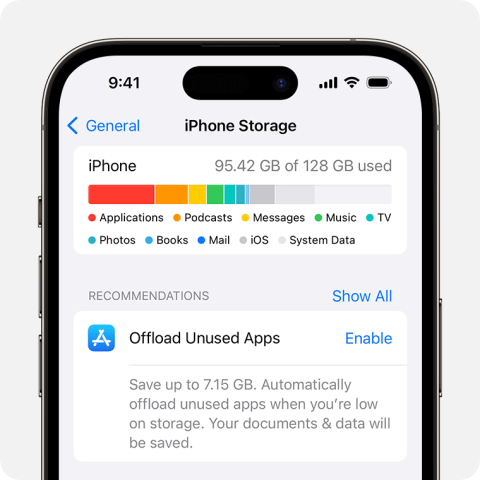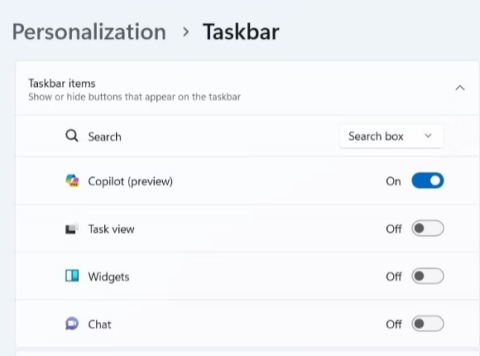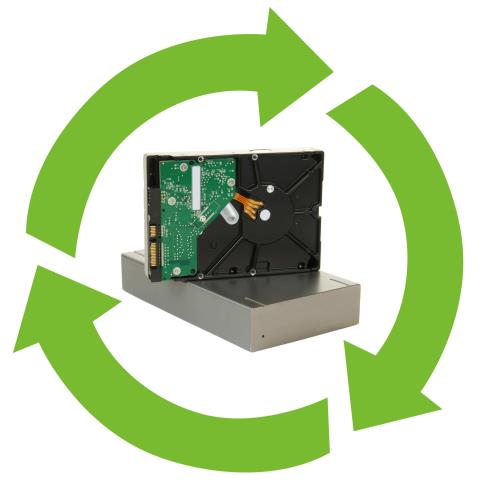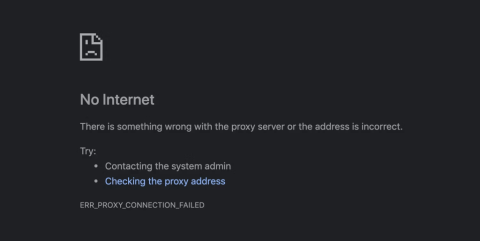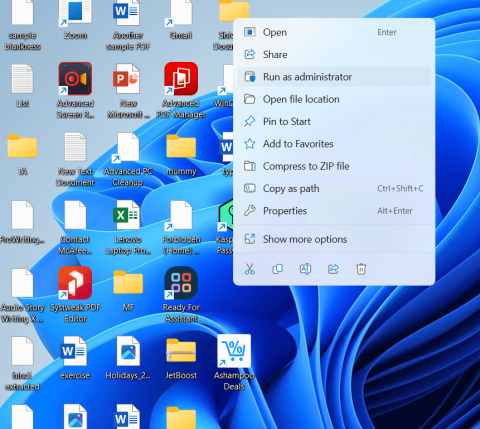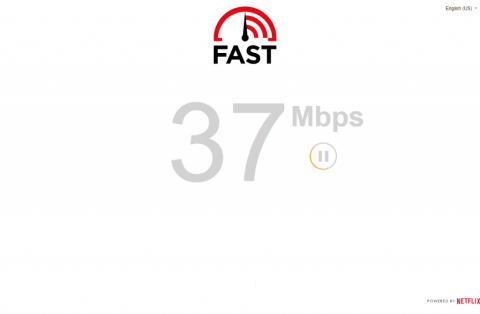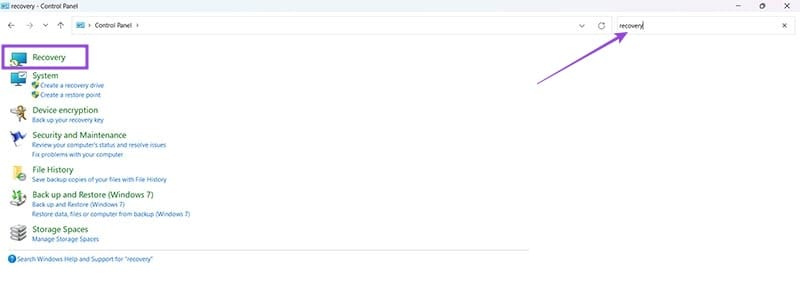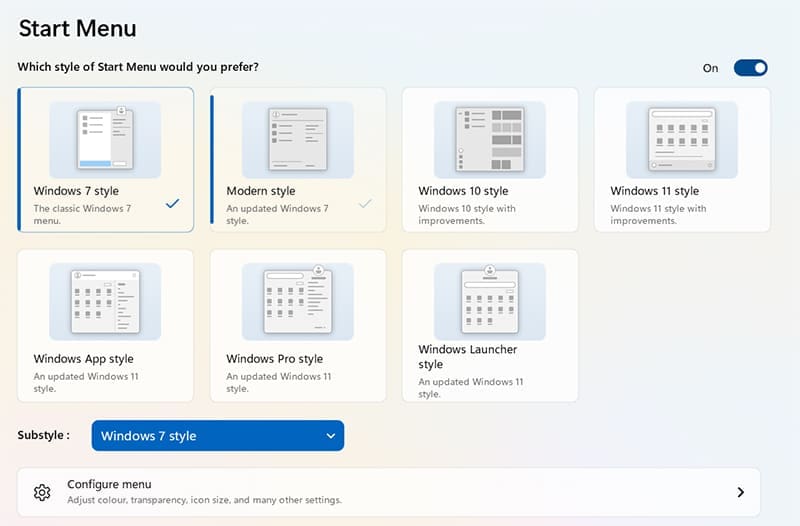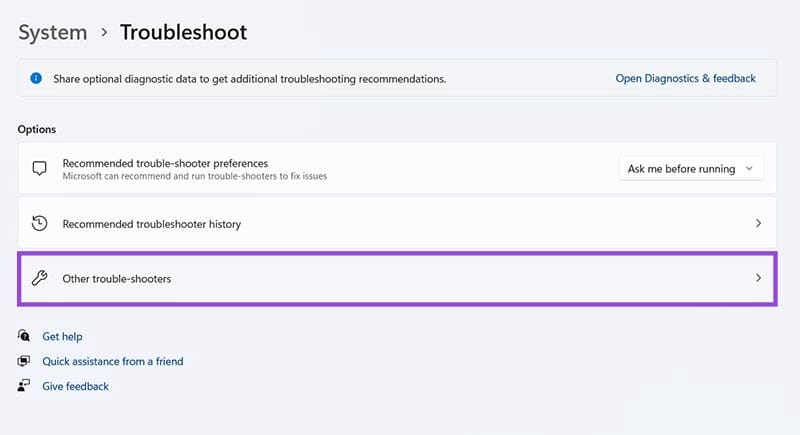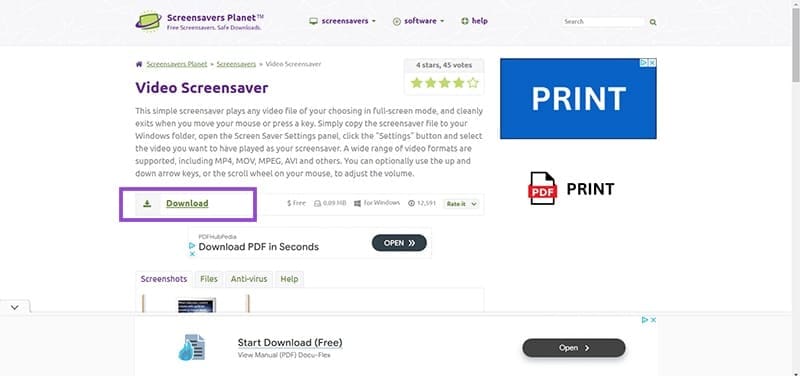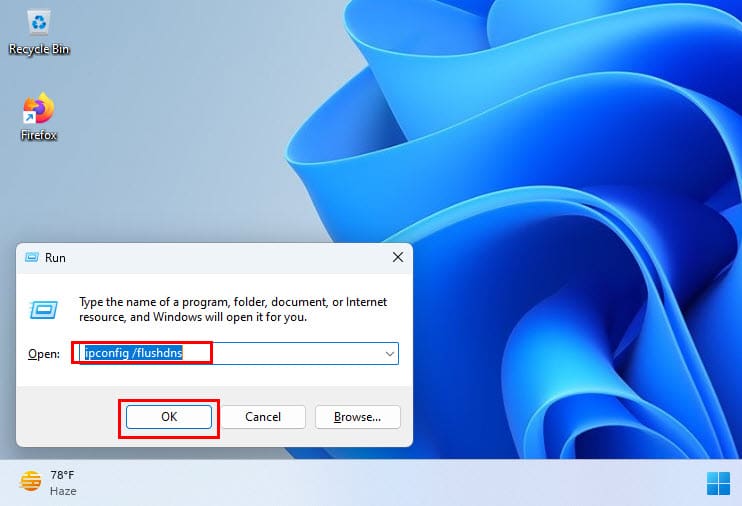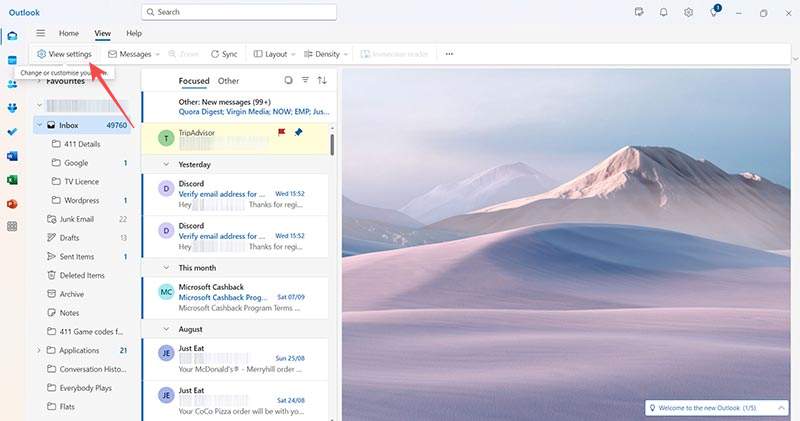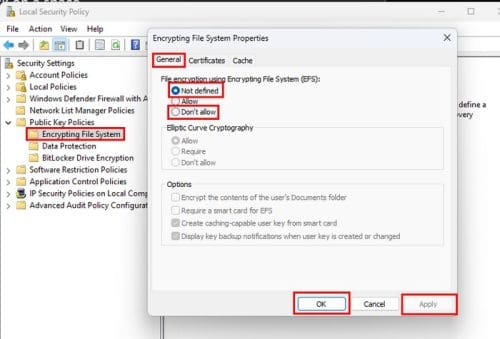Los sistemas operativos son el sustento de cualquier PC ya que, sin ellos, sería imposible enviar correos electrónicos, ver videos de gatos o charlar con nuestros amigos. Pero de vez en cuando, todos los sistemas operativos se encuentran con problemas como arranques lentos, fallas de aplicaciones, visualización con fallas, sonido extraño y todo eso.
Si cree que su copia de Windows 11 también se ha comportado de manera extraña últimamente, creemos que es hora de tomar el asunto en sus propias manos y reparar Windows 11.
Ahora, antes de que se apresure a acudir al técnico de reparación de PC más cercano, echemos un vistazo a los muchos métodos disponibles a su disposición que pueden ayudarlo a reparar una instalación dañada de Windows 11.
Contenido
Método n. ° 1: use un solucionador de problemas de Windows
Los solucionadores de problemas de Windows han recorrido un largo camino y ahora pueden solucionar la mayoría de sus problemas con un simple clic. La mayoría de los comandos y comprobaciones de resolución de problemas que normalmente se realizaban a través de CMD y PowerShell ahora están incluidos en Troubleshooters, lo que los hace mucho más útiles cuando se encuentran problemas. Si aún no puede arreglar y reparar su instalación de Windows 11, entonces vale la pena intentarlo con el solucionador de problemas. Use la guía a continuación para comenzar.
Presione Windows + ien su teclado para abrir la aplicación Configuración. Asegúrese de que 'Sistema' esté seleccionado a su izquierda y luego haga clic en 'Solucionar problemas' a su derecha.
![Cómo reparar Windows 11 [15 formas] Cómo reparar Windows 11 [15 formas]](/resources8/images31/image-6439-0105182722076.png)
Haga clic en 'Otros solucionadores de problemas'.
![Cómo reparar Windows 11 [15 formas] Cómo reparar Windows 11 [15 formas]](/resources8/images31/image-405-0105182722143.png)
Ahora busque el solucionador de problemas correspondiente a su problema actual según el problema que tenga con su instalación. Haga clic en 'Ejecutar' junto al solucionador de problemas.
![Cómo reparar Windows 11 [15 formas] Cómo reparar Windows 11 [15 formas]](/resources8/images31/image-9440-0105182722204.png)
El solucionador de problemas ahora hará lo suyo y solucionará cualquier problema que encuentre con el componente o la función en cuestión.
![Cómo reparar Windows 11 [15 formas] Cómo reparar Windows 11 [15 formas]](/resources8/images31/image-9235-0105182955896.png)
Método n. ° 2: desinstale y vuelva a instalar todas las actualizaciones recientes de Windows
Si se enfrenta a bloqueos aleatorios, rendimiento lento, nerviosismo o errores inesperados después de una actualización reciente de Windows, puede intentar desinstalar las actualizaciones recientes para resolver su problema. Estas actualizaciones deben revertirse con una restauración del sistema usando la guía en la parte superior, pero en caso de que no tenga un punto de restauración, puede usar la guía a continuación para desinstalar manualmente las actualizaciones de Windows de su sistema Windows 11.
Presione Windows + ien su teclado para abrir la aplicación Configuración. Ahora haga clic en Windows Update a su izquierda.
![Cómo reparar Windows 11 [15 formas] Cómo reparar Windows 11 [15 formas]](/resources8/images31/image-6752-0105182955965.png)
Haga clic en 'Historial de actualizaciones'.
![Cómo reparar Windows 11 [15 formas] Cómo reparar Windows 11 [15 formas]](/resources8/images31/image-9408-0105182722517.png)
Desplácese hasta la parte inferior y haga clic en 'Desinstalar actualizaciones'.
![Cómo reparar Windows 11 [15 formas] Cómo reparar Windows 11 [15 formas]](/resources8/images31/image-1959-0105182722745.png)
Ahora será llevado al panel de control donde obtendrá una lista de todas las actualizaciones importantes recientes instaladas en su sistema. No obtendrá actualizaciones de seguridad en esta lista, ya que no se pueden desinstalar por razones de seguridad. Haga clic en y seleccione la actualización que desea desinstalar.
![Cómo reparar Windows 11 [15 formas] Cómo reparar Windows 11 [15 formas]](/resources8/images31/image-3028-0105182722836.png)
Ahora haga clic en 'Desinstalar' en la parte superior.
![Cómo reparar Windows 11 [15 formas] Cómo reparar Windows 11 [15 formas]](/resources8/images31/image-2165-0105182722899.png)
Nota: Si no obtiene la opción Desinstalar, es probable que esté intentando desinstalar un componente vital de Windows que interrumpiría la funcionalidad de su instalación actual.
Haga clic en 'Sí' para confirmar su elección.
![Cómo reparar Windows 11 [15 formas] Cómo reparar Windows 11 [15 formas]](/resources8/images31/image-9581-0105182722985.png)
La actualización seleccionada ahora se desinstalará de su sistema. Le recomendamos que reinicie su sistema y verifique si el problema que estaba enfrentando se ha solucionado. De lo contrario, continúe desinstalando las actualizaciones de Windows hasta que encuentre al culpable.
Método n. ° 3: restauración a un punto de restauración del sistema anterior
Nota: Este método asume que tiene una copia funcional de Windows 11 en la que puede iniciar.
Puede pensar en los Puntos de restauración del sistema como vías para restaurar su sistema a un estado anterior de Windows (cuando se creó el Punto de restauración) junto con las aplicaciones y configuraciones que su PC tenía en ese entonces.
Windows 11 crea automáticamente puntos de restauración del sistema a intervalos regulares. Si lo desea, también puede crear puntos de restauración.
También se crean cuando se instala una nueva aplicación o una actualización de Windows.
A continuación, le mostramos cómo puede intentar reparar Windows 11 utilizando puntos de restauración.
Abra el menú 'Inicio' y escriba "Crear un punto de restauración". Luego haga clic en la opción que se muestra a continuación.
![Cómo reparar Windows 11 [15 formas] Cómo reparar Windows 11 [15 formas]](/resources8/images31/image-7098-0105182723056.png)
Ahora debería estar abierto un menú emergente con el título 'Propiedades del sistema' y debería poder ver las opciones relacionadas con Restaurar sistema como se muestra a continuación.
![Cómo reparar Windows 11 [15 formas] Cómo reparar Windows 11 [15 formas]](/resources8/images31/image-1063-0105182723121.png)
Si su menú emergente es idéntico al nuestro con la 'Protección' desactivada para todas sus unidades, tenemos malas noticias para usted. Debido a la falta de puntos de restauración del sistema anteriores, no tiene sentido continuar con este método, ya que no hay ningún punto de restauración al que retroceder.
En este punto, recomendamos probar el siguiente método.
Consejo: si está leyendo esto solo para ver cómo funcionan las cosas, le sugerimos que active la protección para la unidad de su sistema (resaltada a continuación), la que contiene Windows 11, y cree un punto de restauración ahora mismo.
![Cómo reparar Windows 11 [15 formas] Cómo reparar Windows 11 [15 formas]](/resources8/images31/image-2132-0105182723214.png)
Así es como puede hacerlo.
Seleccione la unidad con la etiqueta 'Sistema' y haga clic en 'Configurar'.
![Cómo reparar Windows 11 [15 formas] Cómo reparar Windows 11 [15 formas]](/resources8/images31/image-6753-0105182723323.png)
Luego haga clic en el botón 'Activar protección del sistema' y asigne algo de espacio para los puntos de restauración del sistema moviendo el control deslizante a continuación. Hemos asignado un mero 4% de la unidad de nuestro sistema, que se acerca a los 4,5 GB.
Si los puntos de restauración aumentan en número o tamaño, los más antiguos se eliminarán automáticamente para dejar espacio para los nuevos.
Haga clic en 'Aplicar' y luego en 'Aceptar'.
![Cómo reparar Windows 11 [15 formas] Cómo reparar Windows 11 [15 formas]](/resources8/images31/image-2650-0105182723417.png)
La unidad que seleccionó anteriormente ahora debería tener 'Protección' activada, y ahora debería poder crear puntos de restauración del sistema.
![Cómo reparar Windows 11 [15 formas] Cómo reparar Windows 11 [15 formas]](/resources8/images31/image-3719-0105182723520.png)
Mientras se encuentra en el mismo menú emergente, haga clic en el botón 'Crear' para crear el primer Punto de restauración del sistema de su PC.
![Cómo reparar Windows 11 [15 formas] Cómo reparar Windows 11 [15 formas]](/resources8/images31/image-7789-0105182723725.png)
Ahora debería haber una ventana emergente pidiendo el nombre de su punto de restauración, siéntase libre de escribir lo que desee. Para su comodidad, la hora y los datos actuales del sistema de su PC se agregan automáticamente para que este punto de restauración se distinga de los demás. Por ahora, estamos escribiendo "Instalación nueva", ya que recientemente reinstalamos Windows 11.
Una vez hecho esto, haga clic en 'Crear'.
![Cómo reparar Windows 11 [15 formas] Cómo reparar Windows 11 [15 formas]](/resources8/images31/image-2823-0105182723892.png)
Después de un tiempo, su punto de restauración debería estar listo. Ahora debería poder verificarlo haciendo clic en el botón 'Restaurar sistema'.
![Cómo reparar Windows 11 [15 formas] Cómo reparar Windows 11 [15 formas]](/resources8/images31/image-7821-0105182956057.png)
Haga clic en Siguiente.
![Cómo reparar Windows 11 [15 formas] Cómo reparar Windows 11 [15 formas]](/resources8/images31/image-7756-0105182724049.png)
Y su punto de restauración del sistema recién creado debería estar aquí.
![Cómo reparar Windows 11 [15 formas] Cómo reparar Windows 11 [15 formas]](/resources8/images31/image-6893-0105182724113.png)
Seleccionar el punto de restauración y hacer clic en el botón 'Siguiente' (luego habilitado) debería llevarlo a restaurar su PC al momento en que se creó el punto de restauración.
Método n. ° 4: uso de la herramienta de símbolo del sistema SFC
El Comprobador de archivos de sistema (SFC) y el Servicio y administración de imágenes de implementación (DISM) son dos herramientas de línea de comandos que los técnicos de TI de las empresas utilizan con más frecuencia para dar servicio a las máquinas Windows.
Si es la primera vez que escucha acerca de estas herramientas, entonces no hay nada de qué preocuparse, ya que generalmente se consideran herramientas eléctricas y no mucha gente las conoce.
Comencemos con SFC primero y veamos cómo puede reparar Windows 11.
SFC se puede utilizar para escanear y verificar archivos protegidos (archivos de Windows). Si encuentra que un archivo se ha dañado y no se puede verificar, intenta restaurar una copia nueva de la carpeta a continuación en su PC.
C:\Windows
A continuación, le indicamos cómo puede probar esta opción.
Haga clic en el botón 'Inicio', escriba "símbolo del sistema" y asegúrese de ejecutar la aplicación como administrador, como se destaca a continuación.
![Cómo reparar Windows 11 [15 formas] Cómo reparar Windows 11 [15 formas]](/resources8/images31/image-8890-0105182956148.png)
Una vez en el símbolo del sistema, escriba el siguiente comando o simplemente cópielo y péguelo. Luego presione 'Enter'.
sfc /scannow
El comando anterior inicia un escaneo instantáneamente, lo que toma aproximadamente unos minutos para una verificación completa.
![Cómo reparar Windows 11 [15 formas] Cómo reparar Windows 11 [15 formas]](/resources8/images31/image-4377-0105182724504.png)
Si el escaneo encuentra que todos sus archivos están en buen estado, se mostrará a continuación.
![Cómo reparar Windows 11 [15 formas] Cómo reparar Windows 11 [15 formas]](/resources8/images31/image-5446-0105182724592.png)
Pero si hay algunos archivos de Windows dañados en su PC, SFC debería poder repararlos con una copia nueva.
Método n. ° 5: uso de la herramienta de símbolo del sistema DISM
DISM es otra herramienta de línea de comandos que es mucho más poderosa que SFC. Puede trabajar con múltiples tipos de imágenes de Windows 11 en formatos .wim y .esd, administrar controladores antes de implementar imágenes en PC y mucho más.
Echemos un vistazo a cómo puede usar DISM para reparar Windows 11.
Abra el símbolo del sistema como administrador siguiendo los pasos que acabamos de mencionar para SFC.
Luego pegue el siguiente comando para escanear su instalación de Windows 11 en busca de errores y presione Entrar.
Dism /Online /Cleanup-Image /ScanHealth
Debería ver algo como esto.
![Cómo reparar Windows 11 [15 formas] Cómo reparar Windows 11 [15 formas]](/resources8/images31/image-5068-0105182725172.png)
Una vez finalizada, la herramienta debe informar sus hallazgos. Así es como se ve nuestra pantalla.
![Cómo reparar Windows 11 [15 formas] Cómo reparar Windows 11 [15 formas]](/resources8/images31/image-9689-0105182725280.png)
Luego, ejecute este comando para ver si se detectó algún problema y qué tan reparable es su problema.
Dism /Online /Cleanup-Image /CheckHealth
Como nuestra PC funcionaba bien, el comando anterior no informó problemas. El tuyo puede ser diferente.
![Cómo reparar Windows 11 [15 formas] Cómo reparar Windows 11 [15 formas]](/resources8/images31/image-3654-0105182725335.png)
Si DISM informó problemas con su PC, el siguiente comando que debe ejecutar se menciona a continuación. Pégalo y presiona 'Enter'.
DISM /Online /Cleanup-Image /RestoreHealth
El comando anterior solicitará copias válidas de archivos dañados de Windows Update. Así es como se ve el comando en acción.
![Cómo reparar Windows 11 [15 formas] Cómo reparar Windows 11 [15 formas]](/resources8/images31/image-7724-0105182725565.png)
Y así es como se ve una vez que ha terminado de procesarse.
![Cómo reparar Windows 11 [15 formas] Cómo reparar Windows 11 [15 formas]](/resources8/images31/image-9311-0105182725854.png)
Todo lo que necesita hacer es reiniciar su PC.
Si se considera alguien que comprende las herramientas de línea de comandos y sus parámetros, y le gustaría saber más sobre SFC y DISM junto con el rango de parámetros que se pueden usar con ellos, aquí está la documentación completa sobre SFC , y aquí está la referencia completa. para DISM . ¡Deléitate con la información!
Tip: If your Windows 11 processes crash often, restart a few seconds later and show an alert with a bunch of numbers and alphabets (aka error codes), we highly recommend putting them in a search engine like Google and understanding what they mean. This method of troubleshooting is extremely effective against specific errors and problems, and can often prove to be a lifesaver.
Method #6: Using Windows 11 Startup Repair
Windows 11 comes equipped with a built-in startup repair tool that is designed to detect and repair common startup problems you may be facing. Let’s take a look at how you can use Startup Repair to fix Windows 11.
Open the ‘Start’ menu and click on the ‘Power’ button.
![Cómo reparar Windows 11 [15 formas] Cómo reparar Windows 11 [15 formas]](/resources8/images31/image-3277-0105182725914.png)
Hold the ‘Shift’ Key and click on ‘Restart’.
![Cómo reparar Windows 11 [15 formas] Cómo reparar Windows 11 [15 formas]](/resources8/images31/image-794-0105182726004.png)
Your PC should boot into a blue screen with a bunch of options. Click on ‘Troubleshoot’.
![Cómo reparar Windows 11 [15 formas] Cómo reparar Windows 11 [15 formas]](/resources8/images31/image-5932-0105182726311.jpg)
Click on ‘Advanced Options’.
![Cómo reparar Windows 11 [15 formas] Cómo reparar Windows 11 [15 formas]](/resources8/images31/image-5382-0105182726417.jpg)
Click on ‘Startup Repair’.
Soon after, Windows should now be scanning and diagnosing your PC for any issues that may be preventing it from functioning properly. Let it work its magic and after some time, your copy of Windows 11 should be free of all the problems.
Tip: If ‘Startup Repair’ fails and you see the screen shown below, there could be two possible reasons for this. Either Windows 11 failed to identify the issues or there is simply no issue with your PC.
![Cómo reparar Windows 11 [15 formas] Cómo reparar Windows 11 [15 formas]](/resources8/images31/image-4518-0105182726486.jpg)
At this point, you could try to follow method #3’s option 2 to initiate a repair of Windows 11. You could also try to reinstall Windows 11 by using the “Upgrade” option in Windows 11 setup, instead of going for a clean install and wiping your drive.
This install method should reinstall Windows 11 while keeping all your files, apps, and settings.
Method #7: Using Windows 11 installer ISO file
Did you know that the files you used to install Windows 11, could also be used to repair a damaged copy of Windows 11?
Not a lot of people know this but it can easily be done and doesn’t take too long at all.
To make this method work, you need access to Windows 11 installation files (ISO) or the installer USB drive you may have used earlier to install Windows 11.
Option 1: Using the setup file from the Windows 11 ISO
See if you have the Windows 11 ISO stored somewhere on your PC. If you do, perfect! No need to download anything.
In case you don’t have the Windows 11 ISO around, we suggest you follow this guide to download the latest available ISO.
Before proceeding, make sure you can boot into Windows 11 and access the ISO. If you can, let’s move to the next step.
Locate the Windows 11 ISO and double-click it.
![Cómo reparar Windows 11 [15 formas] Cómo reparar Windows 11 [15 formas]](/resources8/images31/image-7519-0105182726601.png)
The ISO should now be mounted on a virtual disk drive on your Windows 11 PC and should look similar to this
![Cómo reparar Windows 11 [15 formas] Cómo reparar Windows 11 [15 formas]](/resources8/images31/image-6969-0105182726712.png)
Double-click the virtual drive. Once inside, there should be a file named ‘setup’, double-click it.
![Cómo reparar Windows 11 [15 formas] Cómo reparar Windows 11 [15 formas]](/resources8/images31/image-4486-0105182726796.png)
Tip: Alternatively, you can also extract the ISO somewhere on your pc, which of course would take a bit of time but should give you the same result.
Wait for the Windows 11 setup to start. Once done, you should see a screen similar to below. Click on ‘Next’.
![Cómo reparar Windows 11 [15 formas] Cómo reparar Windows 11 [15 formas]](/resources8/images31/image-3622-0105182726853.png)
Accept the Terms & Conditions.
![Cómo reparar Windows 11 [15 formas] Cómo reparar Windows 11 [15 formas]](/resources8/images31/image-4691-0105182726957.png)
Choose the option that best suits you here and click ‘Next’. We would like to keep our files, hence we’ve chosen ‘Keep personal files and apps’.
![Cómo reparar Windows 11 [15 formas] Cómo reparar Windows 11 [15 formas]](/resources8/images31/image-4141-0105182727056.png)
Click on ‘Install’ to start the installation.
![Cómo reparar Windows 11 [15 formas] Cómo reparar Windows 11 [15 formas]](/resources8/images31/image-7142-0105182727192.png)
After a few seconds, setup should start preparing your PC for an in-place upgrade, which will repair and refresh all the files needed to run Windows 11 on your PC.
![Cómo reparar Windows 11 [15 formas] Cómo reparar Windows 11 [15 formas]](/resources8/images31/image-4659-0105182727255.png)
Your PC may reboot a few times to complete the repair.
Once setup has finished, your copy of Windows 11 should be completely repaired and ready to use.
Option 2: Using a bootable USB drive
If for some reason, your PC fails to boot into Windows 11 or simply reboots repeatedly due to a corrupt Windows file, then this option will be perfect for you.
Before we start, see if you still have the Windows 11 USB install stick you may have used to install Windows 11 on your PC. If you do, then there’s nothing to worry about.
In case you don’t, here’s how you can create a Windows 11 USB installer within a couple of minutes. Do keep in mind that it requires another functional PC with internet to download Rufus and Windows 11 ISO. Simply connect the USB drive to your PC and restart your system. Press any key on your keyboard when prompted to boot from the recovery media and subsequently proceed to repair Windows with the on-screen instructions. You will have the option to reinstall Windows, fix missing files, fix boot order or even use CMD to perform your own checks. If you need any help, then you can this guide to reset Windows from within your recovery media setup and more.
Check this guide: How To Install Windows 11 From USB
Method #8: Repair or Fix Drivers
Many times you can face issues with your Windows installation due to incompatible, outdated, or conflicting drivers installed on your system. Drivers are essential programs that allow your components to communicate with your CPU and GPU for the proper functioning of your system. Having incompatible or conflicting drivers can cause issues with Windows and even take a significant impact on your performance. If some of your components seem to be misbehaving or you feel that your system is drastically slower than expected then it would be a good idea to check your drivers and perform any repairs if needed.
1. Check for conflicting or outdated drivers
Let’s check for conflicting or outdated drivers on your system. Windows automatically shows you a warning sign for misbehaving components or outdated drivers in Device Manager. Use the guide below to look for driver issues on your installation of Windows 11.
Press Windows + X on your keyboard and click on Device Manager.
![Cómo reparar Windows 11 [15 formas] Cómo reparar Windows 11 [15 formas]](/resources8/images31/image-5728-0105182727364.png)
Look for components in the list with a warning side beside them. If any are found, use the methods below to troubleshoot driver issues on your system. However, if none are found then let’s check for new components on your system to identify misbehaving components.
Click on the ‘Scan for hardware changes’ button at the top of your screen.
![Cómo reparar Windows 11 [15 formas] Cómo reparar Windows 11 [15 formas]](/resources8/images31/image-5177-0105182727469.png)
Windows will now scan for hardware changes and install any new components or drivers found on your PC.
![Cómo reparar Windows 11 [15 formas] Cómo reparar Windows 11 [15 formas]](/resources8/images31/image-6246-0105182727564.png)
2. Fix driver issues
If you wish to fix driver issues on your system then you will need to reinstall drivers for the concerned component on your system. This can be done through Windows and manually as well. We recommend manually force removing drivers only if you are unable to remove the driver through Device Manager in Windows. Force removing the wrong drivers can cause serious issues on your system and even force you to reinstall Windows altogether. Hence, ensure that you identify and properly force remove drivers from your system only for the malfunctioning component. Use one of the guides below depending on your current needs and requirements.
Note: If you are using a laptop or a pre-built system then we recommend you download specific drivers for the concerned component from your OEM support side beforehand. This will allow you to install the necessary drivers easily once you have removed the malfunctioning driver.
Read: 6 Ways to Update Drivers on Windows 11
Option 1: Remove and reinstall a component through Device Manager
Press Windows + X on your keyboard and click on ‘Device Manager’.
![Cómo reparar Windows 11 [15 formas] Cómo reparar Windows 11 [15 formas]](/resources8/images31/image-5728-0105182727364.png)
Right-click on the component for which you wish to remove the driver and select Properties.
![Cómo reparar Windows 11 [15 formas] Cómo reparar Windows 11 [15 formas]](/resources8/images31/image-5695-0105182727667.png)
Now click and switch to the Driver tab at the top.
![Cómo reparar Windows 11 [15 formas] Cómo reparar Windows 11 [15 formas]](/resources8/images31/image-3418-0105182727905.png)
Click on ‘Uninstall device’.
![Cómo reparar Windows 11 [15 formas] Cómo reparar Windows 11 [15 formas]](/resources8/images31/image-2867-0105182728010.png)
Check the box for ‘Attempt to remove the driver for this device’.
![Cómo reparar Windows 11 [15 formas] Cómo reparar Windows 11 [15 formas]](/resources8/images31/image-2316-0105182728120.png)
Finally, click on ‘Uninstall’.
![Cómo reparar Windows 11 [15 formas] Cómo reparar Windows 11 [15 formas]](/resources8/images31/image-902-0105182728296.png)
The device driver will now be removed and the device will be uninstalled from your system. You will now be prompted to restart your device. Restart your device as soon as possible and then reinstall the concerned drivers from your OEM’s support site. If you do not have the concerned drivers on your OEM site, then simply scan for hardware changes using the guide above and the necessary drivers will be automatically installed on your system.
Option 2: Manually force remove a driver and reinstall it
You can also manually force remove a driver using a third-party utility. This is not recommended as if Windows is not allowing you to remove a driver then it is probably an essential component that could cause issues on your system. We recommend you properly identify the concerned drivers before removing them from your system. Additionally, you should keep the latest replacement drivers handy so that you can reinstall them as soon as possible. Use the guide below to manually force delete concerned drivers from your system.
We will be using Driver Store Explorer to manually force remove the concerned drivers from your system. Driver Store Explorer is an open-source utility used to identify and remove all the drivers installed on your system. It is hosted on GitHub and can be compiled natively too in case privacy is a concern.
Download Driver Store Explorer to your local storage using the link above. Extract the archive to a convenient location and then launch the app using Rapr.exe.
![Cómo reparar Windows 11 [15 formas] Cómo reparar Windows 11 [15 formas]](/resources8/images31/image-3903-0105182728416.png)
The app will now launch and scan all the drivers installed on your system. Once the list shows up, you can sort it based on the various columns available to you. We recommend you sort your drivers by ‘Provider’ as this will make it easier for you to search the concerned driver based on the manufacturer. Click on Provider at the top to arrange all the drivers ascendingly based on their provider’s name.
![Cómo reparar Windows 11 [15 formas] Cómo reparar Windows 11 [15 formas]](/resources8/images31/image-1420-0105182728498.png)
Scroll the list and identify the concerned driver. Once found check the box beside it.
![Cómo reparar Windows 11 [15 formas] Cómo reparar Windows 11 [15 formas]](/resources8/images31/image-2489-0105182728594.png)
You can now also click on ‘Select oid drivers’ on your right to automatically identify and select other old drivers installed on your system. However, we wouldn’t recommend this on pre-built systems and laptops that can sometimes get faulty driver updates in the future as the device gets older which degrade overall performance in return.
![Cómo reparar Windows 11 [15 formas] Cómo reparar Windows 11 [15 formas]](/resources8/images31/image-3558-0105182728684.png)
Check the box for ‘Force Deletion’ on your right.
![Cómo reparar Windows 11 [15 formas] Cómo reparar Windows 11 [15 formas]](/resources8/images31/image-7422-0105182728754.png)
Finally, click on ‘Delete Driver(s)’. This will force delete all the selected drivers from your system. We highly recommend you restart your system after this and install the new updated drivers you downloaded as soon as possible.
![Cómo reparar Windows 11 [15 formas] Cómo reparar Windows 11 [15 formas]](/resources8/images31/image-212-0105182728819.png)
If faulty drivers were the cause of your issues with Windows 11, then a manual reinstall should help fix this in most cases.
Method #9: Resetting your PC
Like Windows 10, Windows 11 also comes with a nifty feature called ‘Reset this PC’. This can be a lifesaver if you need to clean your PC and start over with Windows 11. Once initiated, the process will roll back Windows 11 to its factory settings.
Here’s how you can proceed with it.
Open the ‘Start’ menu and type in “reset this pc”. You should get a result similar to what’s shown below. Click on ‘Reset this PC’.
![Cómo reparar Windows 11 [15 formas] Cómo reparar Windows 11 [15 formas]](/resources8/images31/image-3525-0105182728991.png)
You should now be in your PC’s Recovery section within the Settings app. To proceed with the reset, simply click on the ‘Reset PC’ button.
![Cómo reparar Windows 11 [15 formas] Cómo reparar Windows 11 [15 formas]](/resources8/images31/image-4594-0105182729090.png)
The next screen should ask you if you’d like to keep your files or remove them entirely. Pick the appropriate option to start resetting your Windows 11.
![Cómo reparar Windows 11 [15 formas] Cómo reparar Windows 11 [15 formas]](/resources8/images31/image-9527-0105182729253.png)
Your selection should be followed by a reboot or two and in a few minutes, your PC should boot into a refreshed Windows 11.
Method #10: Fix boot issues with Windows 11
If you are having boot issues with Windows 11 then we can use bootrec.exe tool to fix most boot issues. Use the guide below to run bootrec.exe on your system. You will need to boot into Windows Recovery and then use CMD to execute these commands though. Use one of the methods above to boot into recovery mode in Windows via Settings or a recovery media and then use the guide below to execute bootrec commands and fix boot issues with Windows 11.
When at the recovery screen press Shift + F10 to bring up the CMD at any point during the recovery process.
Type in the following command to run bootrec.exe and press Enter on your keyboard to execute it.
bootrec.exe
Enter the following command first and press Enter on your keyboard to execute it.
Bootrec /fixmbr
Now enter the one below and execute it.
Bootrec /fixboot
Finally, enter the command below to rebuild your boot device order.
Bootrec /rebuildbcd
And that’s it! We recommend you restart your system for good measure or exit the recovery screen and try booting into Windows again. If you were facing boot issues, then this will have most likely fixed the issue for you.
If you have been facing start menu issues within Windows 11 then there are many fixes that you can try. The new start menu seems to be a hit or miss with users and many have tried to customize it in their own way. This has been known to break start menu functionality with recent updates and if you are facing issues after a recent update then this is likely the cause for you as well.
You can use this comprehensive guide by us to fix all kinds of Start menu issues on your Windows 11 system. You will even find ways to restore the older start menu and new ways to get the start menu back up and running on your system in no time.
Related: How to Fix ‘Windows 11 Start Menu Not Working’ Issue? [17 Ways]
Method #12: Fix random app crashes
Random app crashes have been a known issue since Windows 11 was first announced and the first insider build hit the shelves. This is mainly due to some core changes to Windows that now break functionality for previously compatible programs with Windows 10. This might be heartbreaking for many users that are unable to get their favorite programs and apps back up and running within Windows 11. There are a couple of things you can do to fix this issue and the most prominent ones have been covered by us in this comprehensive guide. If you are facing random app crashes then this will most likely help you solve the majority of crashes on your system.
Read: How To Fix Software Crashing on Windows 11 Dev Build
Method #13: Fix corrupt registry
Registry changes, incorrect values, and deleted or missing registry entries can also cause a lot of issues with your system. Chances are that if you modified your registry with a registry hack or used a third-party tool to clean your registry then the values were messed up during this process.
Due to the core changes in Windows 11, the registry values, locations, and entries are different from the ones on Windows 10. Additionally, the ones that were okay to be deleted earlier might be vital to the functioning of Windows in the latest version.
Hence using a compatible cleaner or repair tool for the registry can remove vital values that could cause issues with your system. You can use the guide below to try and fix the registry on your Windows 11 installation. But as the OS is fairly new, this might not work for you and in case it doesn’t you will have to reset your Windows to restore your registry values to their default entries.
By this point, the registry should have been fixed on your system as you will have already run SFC and DISM scans on your system (as given above). However if your registry still seems to be corrupted, then you can use a third-party app to fix it.
We recommend you use CCleaner’s free utility which can be downloaded using the link above. Once downloaded, run the .exe file and install CCleaner on your system. Then launch the app and follow the on-screen instructions to fix your registry.
We recommend you do not clean your registry or temporary files using CCleaner until it has been officially updated to support Windows 11. As for fixing the registry, the app did not produce any issues on our end despite multiple tries so you should be safe to fix your registry using CCleaner.
Method #14: Fix lack of storage space
If you seem to be missing storage space to random files on your system and are unable to identify large files on your system then it is likely that temporary files have started to take a toll on your local storage. Windows 11 is designed to clear most temporary files by default but this can option can sometimes bug out which can cause a large number of temporary files to accumulate on your system.
You can use our guide to delete the temporary files from your system. Once deleted, you should be able to gain back some significant storage space especially after clearing previous Windows installation files and downloaded Windows Updates.
Method #15: Boot into safe mode to identify third party culprits
Lastly, it could also be that your issue is being caused by a third-party app. As Windows 11 is fairly new and most recent updates to popular apps are using compatibility layers to work, it is likely that you are facing a bug with a third-party app. Third-party apps can create huge conflicts and issues in the background depending on what they do and it can end up being quite tough to identify the culprit.
Thankfully, Windows comes with a safe mode to troubleshoot exactly this problem. Safe mode helps disable all third-party apps, services, and tasks in the background. You can then verify the functioning of Windows in safe mode and start removing the suspected culprits one by one.
Once you find the culprit, you can restore your previously removed apps and continue using the OS until a fix is released by the concerned developer.
Unfortunately, this is a tedious process and there is no way around it, but if a third-party app is causing issues on your system, safe mode can help you identify and remove the culprit easily. You can use this guide to help you navigate and activate safe mode in Windows 11.
You can also use this trick to directly restart your system in the advanced recovery options state. Click on the ‘Start’ menu icon in your taskbar.
Now click on the ‘Power’ icon.
![Cómo reparar Windows 11 [15 formas] Cómo reparar Windows 11 [15 formas]](/resources8/images31/image-4249-0105182729349.png)
Hold down the ‘Shift’ key on your keyboard and then click on ‘Restart’.
![Cómo reparar Windows 11 [15 formas] Cómo reparar Windows 11 [15 formas]](/resources8/images31/image-2835-0105182729531.png)
Your Windows 11 PC will now automatically reboot into the Advanced recovery options.
Click on ‘Troubleshoot’ to get started. Now, click Advanced options > See more recovery options > Startup Settings > Restart.
You will now get a list of all the ways your computer can start up with elevated settings or restricted services. You will have the following options for Safe modes.
- F4: Enable Safe mode
- F5: Enable Safe mode with networking
- F6: Enable Safe mode with command prompt
Press the desired key on your keyboard and your system will automatically restart in the desired Safe mode.
Well, these are all the proven methods that you can try to repair corrupted Windows 11. Some of these methods are fairly easy to use, while some may seem advanced for an average joe.
If you ever feel stuck at any point while following our methods, drop us a comment and we’d be happy to sort out the confusion.
Related:
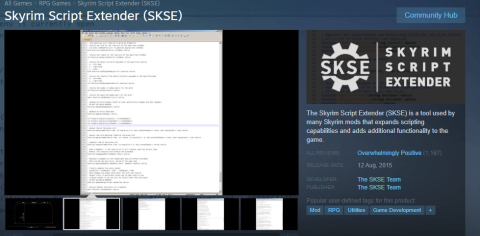

![Cómo reparar Windows 11 [15 formas] Cómo reparar Windows 11 [15 formas]](/resources8/images31/image-6439-0105182722076.png)
![Cómo reparar Windows 11 [15 formas] Cómo reparar Windows 11 [15 formas]](/resources8/images31/image-405-0105182722143.png)
![Cómo reparar Windows 11 [15 formas] Cómo reparar Windows 11 [15 formas]](/resources8/images31/image-9440-0105182722204.png)
![Cómo reparar Windows 11 [15 formas] Cómo reparar Windows 11 [15 formas]](/resources8/images31/image-9235-0105182955896.png)
![Cómo reparar Windows 11 [15 formas] Cómo reparar Windows 11 [15 formas]](/resources8/images31/image-6752-0105182955965.png)
![Cómo reparar Windows 11 [15 formas] Cómo reparar Windows 11 [15 formas]](/resources8/images31/image-9408-0105182722517.png)
![Cómo reparar Windows 11 [15 formas] Cómo reparar Windows 11 [15 formas]](/resources8/images31/image-1959-0105182722745.png)
![Cómo reparar Windows 11 [15 formas] Cómo reparar Windows 11 [15 formas]](/resources8/images31/image-3028-0105182722836.png)
![Cómo reparar Windows 11 [15 formas] Cómo reparar Windows 11 [15 formas]](/resources8/images31/image-2165-0105182722899.png)
![Cómo reparar Windows 11 [15 formas] Cómo reparar Windows 11 [15 formas]](/resources8/images31/image-9581-0105182722985.png)
![Cómo reparar Windows 11 [15 formas] Cómo reparar Windows 11 [15 formas]](/resources8/images31/image-7098-0105182723056.png)
![Cómo reparar Windows 11 [15 formas] Cómo reparar Windows 11 [15 formas]](/resources8/images31/image-1063-0105182723121.png)
![Cómo reparar Windows 11 [15 formas] Cómo reparar Windows 11 [15 formas]](/resources8/images31/image-2132-0105182723214.png)
![Cómo reparar Windows 11 [15 formas] Cómo reparar Windows 11 [15 formas]](/resources8/images31/image-6753-0105182723323.png)
![Cómo reparar Windows 11 [15 formas] Cómo reparar Windows 11 [15 formas]](/resources8/images31/image-2650-0105182723417.png)
![Cómo reparar Windows 11 [15 formas] Cómo reparar Windows 11 [15 formas]](/resources8/images31/image-3719-0105182723520.png)
![Cómo reparar Windows 11 [15 formas] Cómo reparar Windows 11 [15 formas]](/resources8/images31/image-7789-0105182723725.png)
![Cómo reparar Windows 11 [15 formas] Cómo reparar Windows 11 [15 formas]](/resources8/images31/image-2823-0105182723892.png)
![Cómo reparar Windows 11 [15 formas] Cómo reparar Windows 11 [15 formas]](/resources8/images31/image-7821-0105182956057.png)
![Cómo reparar Windows 11 [15 formas] Cómo reparar Windows 11 [15 formas]](/resources8/images31/image-7756-0105182724049.png)
![Cómo reparar Windows 11 [15 formas] Cómo reparar Windows 11 [15 formas]](/resources8/images31/image-6893-0105182724113.png)
![Cómo reparar Windows 11 [15 formas] Cómo reparar Windows 11 [15 formas]](/resources8/images31/image-8890-0105182956148.png)
![Cómo reparar Windows 11 [15 formas] Cómo reparar Windows 11 [15 formas]](/resources8/images31/image-4377-0105182724504.png)
![Cómo reparar Windows 11 [15 formas] Cómo reparar Windows 11 [15 formas]](/resources8/images31/image-5446-0105182724592.png)
![Cómo reparar Windows 11 [15 formas] Cómo reparar Windows 11 [15 formas]](/resources8/images31/image-5068-0105182725172.png)
![Cómo reparar Windows 11 [15 formas] Cómo reparar Windows 11 [15 formas]](/resources8/images31/image-9689-0105182725280.png)
![Cómo reparar Windows 11 [15 formas] Cómo reparar Windows 11 [15 formas]](/resources8/images31/image-3654-0105182725335.png)
![Cómo reparar Windows 11 [15 formas] Cómo reparar Windows 11 [15 formas]](/resources8/images31/image-7724-0105182725565.png)
![Cómo reparar Windows 11 [15 formas] Cómo reparar Windows 11 [15 formas]](/resources8/images31/image-9311-0105182725854.png)
![Cómo reparar Windows 11 [15 formas] Cómo reparar Windows 11 [15 formas]](/resources8/images31/image-3277-0105182725914.png)
![Cómo reparar Windows 11 [15 formas] Cómo reparar Windows 11 [15 formas]](/resources8/images31/image-794-0105182726004.png)
![Cómo reparar Windows 11 [15 formas] Cómo reparar Windows 11 [15 formas]](/resources8/images31/image-5932-0105182726311.jpg)
![Cómo reparar Windows 11 [15 formas] Cómo reparar Windows 11 [15 formas]](/resources8/images31/image-5382-0105182726417.jpg)
![Cómo reparar Windows 11 [15 formas] Cómo reparar Windows 11 [15 formas]](/resources8/images31/image-4518-0105182726486.jpg)
![Cómo reparar Windows 11 [15 formas] Cómo reparar Windows 11 [15 formas]](/resources8/images31/image-7519-0105182726601.png)
![Cómo reparar Windows 11 [15 formas] Cómo reparar Windows 11 [15 formas]](/resources8/images31/image-6969-0105182726712.png)
![Cómo reparar Windows 11 [15 formas] Cómo reparar Windows 11 [15 formas]](/resources8/images31/image-4486-0105182726796.png)
![Cómo reparar Windows 11 [15 formas] Cómo reparar Windows 11 [15 formas]](/resources8/images31/image-3622-0105182726853.png)
![Cómo reparar Windows 11 [15 formas] Cómo reparar Windows 11 [15 formas]](/resources8/images31/image-4691-0105182726957.png)
![Cómo reparar Windows 11 [15 formas] Cómo reparar Windows 11 [15 formas]](/resources8/images31/image-4141-0105182727056.png)
![Cómo reparar Windows 11 [15 formas] Cómo reparar Windows 11 [15 formas]](/resources8/images31/image-7142-0105182727192.png)
![Cómo reparar Windows 11 [15 formas] Cómo reparar Windows 11 [15 formas]](/resources8/images31/image-4659-0105182727255.png)
![Cómo reparar Windows 11 [15 formas] Cómo reparar Windows 11 [15 formas]](/resources8/images31/image-5728-0105182727364.png)
![Cómo reparar Windows 11 [15 formas] Cómo reparar Windows 11 [15 formas]](/resources8/images31/image-5177-0105182727469.png)
![Cómo reparar Windows 11 [15 formas] Cómo reparar Windows 11 [15 formas]](/resources8/images31/image-6246-0105182727564.png)
![Cómo reparar Windows 11 [15 formas] Cómo reparar Windows 11 [15 formas]](/resources8/images31/image-5695-0105182727667.png)
![Cómo reparar Windows 11 [15 formas] Cómo reparar Windows 11 [15 formas]](/resources8/images31/image-3418-0105182727905.png)
![Cómo reparar Windows 11 [15 formas] Cómo reparar Windows 11 [15 formas]](/resources8/images31/image-2867-0105182728010.png)
![Cómo reparar Windows 11 [15 formas] Cómo reparar Windows 11 [15 formas]](/resources8/images31/image-2316-0105182728120.png)
![Cómo reparar Windows 11 [15 formas] Cómo reparar Windows 11 [15 formas]](/resources8/images31/image-902-0105182728296.png)
![Cómo reparar Windows 11 [15 formas] Cómo reparar Windows 11 [15 formas]](/resources8/images31/image-3903-0105182728416.png)
![Cómo reparar Windows 11 [15 formas] Cómo reparar Windows 11 [15 formas]](/resources8/images31/image-1420-0105182728498.png)
![Cómo reparar Windows 11 [15 formas] Cómo reparar Windows 11 [15 formas]](/resources8/images31/image-2489-0105182728594.png)
![Cómo reparar Windows 11 [15 formas] Cómo reparar Windows 11 [15 formas]](/resources8/images31/image-3558-0105182728684.png)
![Cómo reparar Windows 11 [15 formas] Cómo reparar Windows 11 [15 formas]](/resources8/images31/image-7422-0105182728754.png)
![Cómo reparar Windows 11 [15 formas] Cómo reparar Windows 11 [15 formas]](/resources8/images31/image-212-0105182728819.png)
![Cómo reparar Windows 11 [15 formas] Cómo reparar Windows 11 [15 formas]](/resources8/images31/image-3525-0105182728991.png)
![Cómo reparar Windows 11 [15 formas] Cómo reparar Windows 11 [15 formas]](/resources8/images31/image-4594-0105182729090.png)
![Cómo reparar Windows 11 [15 formas] Cómo reparar Windows 11 [15 formas]](/resources8/images31/image-9527-0105182729253.png)
![Cómo reparar Windows 11 [15 formas] Cómo reparar Windows 11 [15 formas]](/resources8/images31/image-4249-0105182729349.png)
![Cómo reparar Windows 11 [15 formas] Cómo reparar Windows 11 [15 formas]](/resources8/images31/image-2835-0105182729531.png)
